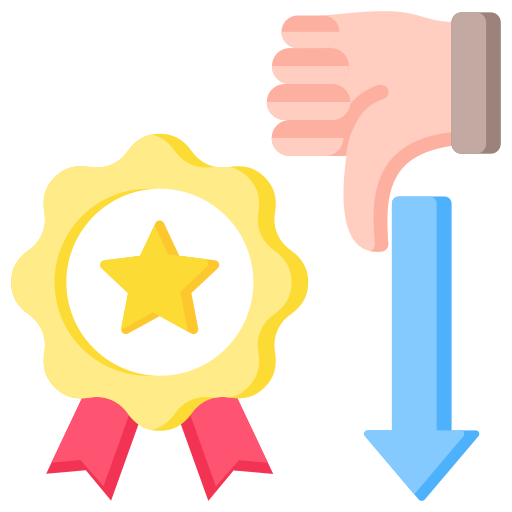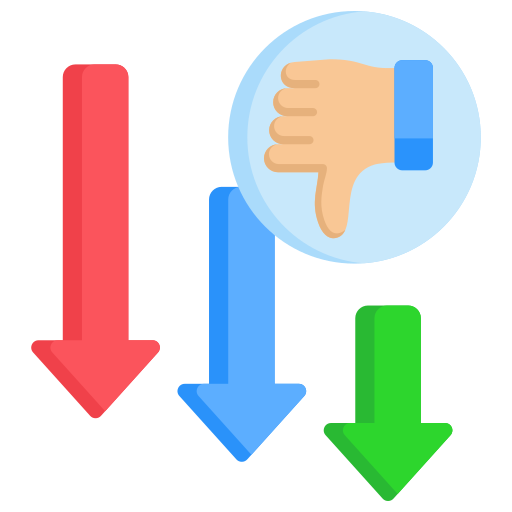
How Employee Monitoring Software Deals with Employee Disengagement ?
Maintaining employee engagement has become a critical factor for business success. Disengaged employees not only impact productivity but can also affect workplace morale and overall company culture.
Low employee productivity can negatively impact the business and hence you need to manage employee disengagement.
Employee disengagement is a silent productivity killer costing businesses billions. But what if there was a way to spot these warning signs before they turned into full-blown burnout? We could make time go faster by identifying and addressing disengagement early, ensuring a more motivated and productive workforce.
That’s when employee monitoring software enters the game. It is an innovative tool designed to not just track productivity, but to identify and address signs of disengagement before they escalate.
Since employee monitoring is legal in India, using it efficiently providing it adheres to guidelines and respects employees’ rights to privacy, can enhance productivity, ensure compliance with company policies, and protect sensitive information.
As businesses strive to maintain productivity and address issues like employee disengagement, the use of monitoring software can be a valuable tool as it helps in preventing time card fraud which inturn helps in accurately tracking work hours and payroll, ensuring fairness and transparency across the organization.
In this blog, we’ll explore how modern employee monitoring solutions are transforming the workplace by helping engagement, enhancing communication, and ultimately creating a more motivated and productive workforce.
What is employee disengagement ?
Employee disengagement refers to a lack of emotional commitment and motivation among employees towards their work and the organization. Disengaged employees often show minimal enthusiasm, reduced productivity, and a lack of interest in contributing to the company’s goals.
This disengagement can manifest in various ways, such as increased absenteeism, poor performance, lack of initiative, and a general negative attitude. The consequences of employee disengagement are significant, leading to lower overall productivity, higher turnover rates, and a negative impact on workplace culture. Addressing employee disengagement is important for maintaining a healthy, dynamic, and successful work environment.
Employee engagement vs Employee disengagement
Understanding the difference between employee engagement and disengagement is crucial for any business wanting to succeed today. Engaged employees are committed and enthusiastic about their work, boosting productivity, innovation, and morale. On the other hand, disengaged employees can harm these areas, leading to poor performance and hurting the company’s profits.
The table below compares these two states to show their impact and emphasize the importance of having an engaged workforce.
| Aspect | Employee Engagement | Employee Disengagement |
|---|---|---|
| Productivity | High productivity due to motivation and commitment | Low productivity due to lack of motivation |
| Innovation | Proactive in contributing ideas and solutions | Rarely contributes to innovation or problem-solving |
| Work Quality | High-quality work with attention to detail | Poor quality work with frequent errors |
| Absenteeism | Lower absenteeism rates as employees are more dedicated | Higher absenteeism rates due to lack of interest |
| Turnover Rates | Lower turnover, employees are more likely to stay | Higher turnover, employees are more likely to leave |
| Team Collaboration | Strong collaboration and teamwork | Weak collaboration and potential conflicts |
| Customer Satisfaction | Higher customer satisfaction due to better service | Lower customer satisfaction due to poor service |
| Company Culture | Positive, vibrant, and supportive work environment | Negative, toxic, and demotivating work environment |
| Financial Impact | Positive financial outcomes through increased efficiency | Negative financial impact due to inefficiency and turnover |
The Negative Impact of Disengaged Employees
Disengaged employees can have far-reaching negative effects on an organization. Understanding these impacts is crucial for businesses to take proactive measures in fostering engagement and mitigating potential damage. Here are the key negative impacts of disengaged employees, along with detailed explanations:

Reduced Productivity
Disengaged employees lack motivation and enthusiasm for their work, leading to significantly lower productivity levels. They are less likely to put in the effort required to complete tasks efficiently, resulting in slower progress and missed deadlines.

Lower Quality of Work
When employees are disengaged, the quality of their work often suffers. They may not pay attention to details, make more mistakes, and show little interest in delivering high standards. This can lead to an increase in errors, rework, and overall inferior output.

Higher Absenteeism
Disengaged employees are more likely to take frequent sick days or unplanned leave. Their lack of commitment and dissatisfaction with their job makes them more inclined to avoid work, leading to increased absenteeism rates and disruption in business operations.

Increased Turnover Rates
A disengaged workforce is more prone to higher turnover rates. Disengaged employees are less loyal and more likely to seek opportunities elsewhere. This constant churn results in increased recruitment and training costs, as well as loss of institutional knowledge.

Negative Workplace Morale
Disengaged employees can negatively affect the morale of their colleagues. Their lack of enthusiasm and negative attitude can be contagious, spreading discontent and reducing overall team spirit. This can create a toxic work environment, further exacerbating disengagement.

Poor Customer Service
Employees who are not engaged are less likely to provide high-quality customer service. Their disinterest and lack of commitment can result in poor customer interactions, leading to dissatisfied customers, negative reviews, and potential loss of business.

Reduced Innovation
Innovation thrives on the active participation and enthusiasm of employees. Disengaged employees are less likely to contribute ideas, take initiative, or participate in problem-solving activities. This stifles creativity and hinders the company’s ability to innovate and stay competitive.

Higher Operational Costs
The inefficiencies caused by disengaged employees, such as reduced productivity, increased errors, and higher turnover, translate into higher operational costs. The business may need to invest more in managing these issues, which can strain financial resources.

Negative Impact on Company Reputation
A company known for having disengaged employees can suffer reputational damage. Word of mouth and online reviews from disgruntled employees can deter potential talent and customers, impacting the company’s ability to attract and retain both.

Financial Loss
Ultimately, the cumulative effects of disengaged employees lead to significant financial losses. Lower productivity, higher absenteeism, increased turnover, poor customer service, and reduced innovation all contribute to a decline in profitability and growth.
Causes of Employee Disengagement
Employee disengagement can stem from a variety of factors. Identifying these causes is crucial for organizations to develop effective strategies to foster engagement and create a more motivated workforce. Here are ten common causes of employee disengagement:
1. Lack of Recognition and Appreciation
Employees who do not feel valued or appreciated for their efforts are likely to become disengaged. Recognition and rewards play a significant role in boosting morale and motivation.
2. Poor Leadership
Ineffective leadership can lead to disengagement. Employees need leaders who provide clear direction, support, and inspiration. Poor communication, lack of vision, and micromanagement can demoralize employees.
3. Limited Career Growth Opportunities
When employees feel there is no room for advancement or professional development within the organization, they may lose motivation. Career stagnation can lead to a lack of interest in their work.
4. Inadequate Compensation and Benefits
If employees feel they are not compensated fairly for their work, it can lead to dissatisfaction and disengagement. Competitive salaries and benefits are essential to retain motivated employees.
5. Work-Life Imbalance
A poor balance between work and personal life can cause stress and burnout. Employees need to feel that their employer respects their personal time and supports a healthy work-life balance.
6. Lack of Autonomy
Employees who are not given the freedom to make decisions or take ownership of their work may feel undervalued and disengaged. Autonomy fosters a sense of responsibility and empowerment.
7. Unsatisfactory Work Environment
A negative or toxic work environment can significantly impact employee engagement. Factors such as poor office conditions, lack of resources, and interpersonal conflicts can create a hostile atmosphere.
8. Misalignment with Company Values
When employees do not resonate with the company’s values or mission, they are less likely to feel connected to their work. Alignment with organizational values is crucial for a sense of purpose and belonging.
9. Ineffective Communication
Poor communication between management and employees can lead to misunderstandings, frustration, and a sense of being out of the loop. Open, transparent, and regular communication is vital for engagement.
10. Job Insecurity
Fear of job loss or uncertainty about the future of the company can lead to anxiety and disengagement. Employees need to feel secure in their positions to be fully committed to their work.
Measures to Tackle Employee Disengagement
Implement these actionable solutions to boost employee morale, re energize your teams, unlock their potential, and see your organization flourish.
Encourage Open Communication
Encourage open dialogue where employees feel heard and valued. Hold regular town hall meetings and allow employees to share their thoughts and concerns freely. An anonymous suggestion box can also help gather honest feedback.
Give Constructive Feedback
Conduct regular performance reviews that focus on strengths and areas for improvement. Lead by example to help employees grow. Promote a culture of continuous feedback with two-way communication to stimulate healthy interaction among teams.
Enhance Growth and Development Opportunities
Offer training programs, workshops, and courses to help employees acquire new skills and see clear career paths. Facilitate mentorship programs to aid knowledge transfer within the organization.
Create a Positive Environment and Promote Wellness
Establish a comfortable and aesthetically pleasing workspace. Initiate wellness programs like yoga classes or mental health workshops to boost physical and mental strength. Encourage regular breaks and discourage excessive overtime to prevent burnout.
Encourage Collaboration and Innovation
Foster a collaborative culture where diverse opinions are valued. Encourage teamwork and creativity through cross-functional projects.
Cultivate a Sense of Community
Organize team-building activities and events to build camaraderie among employees. Create social spaces within the workplace for casual interactions. Support employee resource groups to build a sense of belonging.
Recognize and Reward Achievements
Implement a strong employee recognition program with both monetary and non-monetary rewards for outstanding performance. Publicly acknowledge and celebrate achievements to boost self-confidence and respect for the organization.
Arrange Recreational Activities
Plan team-building retreats or off-site events to strengthen workplace relationships. Provide recreational spaces within the workplace and offer flexible work schedules or remote work options to help employees work more efficiently.
Conduct Employee Surveys
Regularly gather feedback through surveys to understand employee satisfaction. Use the results to identify areas for improvement and address concerns.
Promote Work-Life Balance
Set clear expectations for working hours and overtime. Discourage a culture of excessive overtime and respond promptly to signs of burnout.
Solutions to Employee Disengagement
Employee monitoring software can play a crucial role in addressing the causes of employee disengagement. Here’s how it can be effectively utilized:
Track Employee Activity Levels
Employee monitoring software can help track activity levels, providing insights into how employees are spending their time. This data can identify patterns of disengagement, such as decreased activity or prolonged periods of inactivity.
Identify Disengaged Employees
By analyzing activity data, the software can pinpoint employees who may be disengaged. This enables managers to proactively address issues before they escalate, offering support and intervention when needed.
Provide Performance Feedback
The software can deliver regular feedback on employee performance. By highlighting strengths and areas for improvement, it fosters a culture of continuous feedback and growth, helping employees stay motivated and engaged.
Create a Positive Work Environment
Employee monitoring software can contribute to a more positive work environment in several ways:
Track Productivity: Monitoring productivity helps ensure employees are meeting their goals. Recognizing productive employees and addressing those who need help can create a balanced and supportive work atmosphere.
Identify Improvement Areas: The software can identify areas where employees can enhance their skills or efficiency. Tailored training programs can then be implemented to address these gaps, promoting professional development.
Provide Learning and Growth Opportunities: By identifying skill gaps and performance issues, the software can highlight opportunities for learning and growth. Offering targeted training and development programs can help employees feel valued and motivated to improve.
Statily Features for Tackling Employee Disengagement
Statily offers a range of features designed to help address employee disengagement effectively:
Automated Time Tracking
Statily’s automated time tracking feature ensures accurate recording of hours worked, enhancing work productivity and helping to identify productivity trends and potential areas of disengagement. This feature allows managers to monitor work patterns and intervene when necessary to support employees, highlighting the importance of maintaining optimal productivity levels throughout the organization.
Activity Tracking
The activity tracking feature provides detailed insights into how employees are spending their time on various tasks, facilitating employee performance measurement. By identifying periods of inactivity or low engagement, managers can address issues proactively and provide necessary support or resources. This ensures efficient workflow management and enhances overall team productivity.
Attendance Management
With Statily’s attendance management, tracking employee attendance becomes seamless. This feature helps identify patterns of absenteeism that may indicate disengagement, allowing for timely intervention and support.
Automated Screenshots
The automated screenshot feature allows for a visual overview of employee activities, providing an additional layer of transparency and accountability. This can help in understanding work habits and identifying any discrepancies in productivity.
Practical Applications
Regular Performance Reviews
Use data from the monitoring software to conduct regular, objective performance reviews. This helps ensure feedback is based on actual performance metrics, leading to more meaningful discussions and development plans.
Customized Training Programs
Identify specific areas where employees need improvement and create customized training programs to address these needs. This targeted approach can lead to more effective skill development and career growth.
Recognize Achievements
Make use of productivity data to recognize and reward high-performing employees. Regular recognition can boost morale and encourage continued engagement and effort.
Proactive Support
Identify employees showing signs of disengagement early and offer support through counseling, additional resources, or workload adjustments. Proactive intervention can prevent disengagement from escalating.
Enhanced Communication
Use insights from the software to improve communication between managers and employees. Regular check-ins based on real-time data can ensure employees feel heard and supported.
Conclusion
By making use of these technologies like workforce management software and employee monitoring software organizations not only enhance productivity and efficiency but also foster a supportive work environment where employees feel valued and respected. It’s essential for businesses to implement monitoring practices that comply with Indian laws and regulations, ensuring that they contribute positively to organizational success while upholding employees’ rights and well-being.
Comments